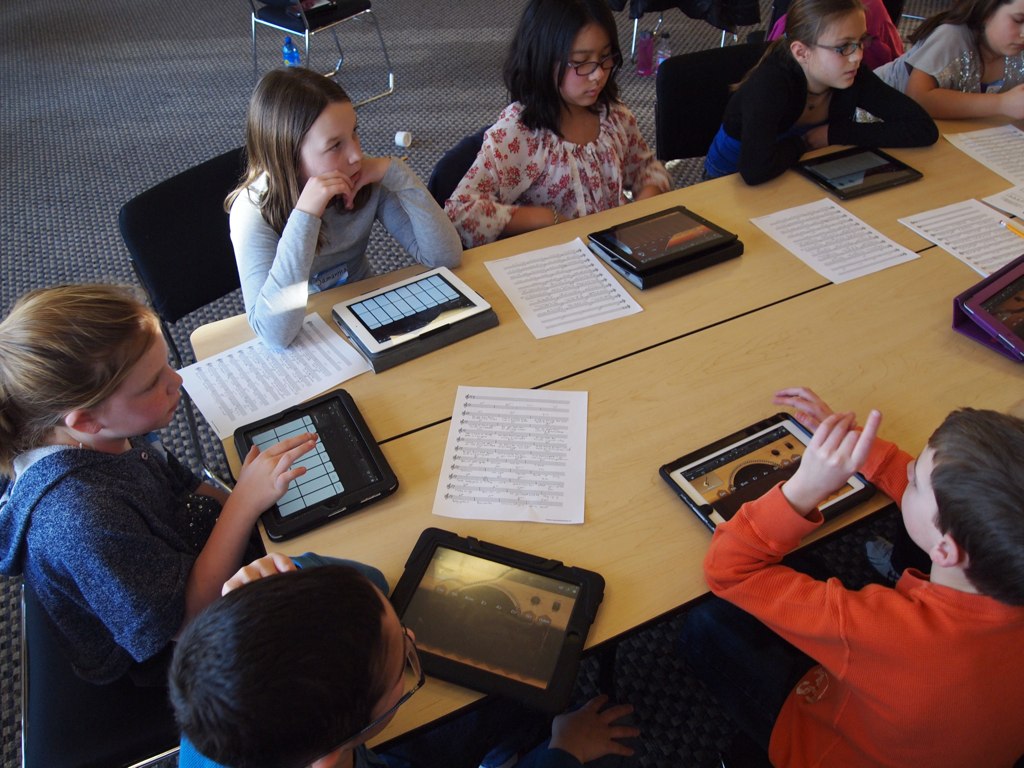 //embedr.flickr.com/assets/client-code.js
//embedr.flickr.com/assets/client-code.js
Over the last few weeks we have been talking a lot about the idea of “digital natives” vs. “digital immigrants” or “digital residents” vs. “digital visitors”, so in my research I wanted to spend sometime looking closer at this idea and the application it has to the classroom. Using those identities as a search I came across the article “Shrek Meets Vygotsky: Rethinking Adolescents’ Multimodal Literacy Practices in Schools”, by Kathy A. Mills. The bi-line caught my attention, it said, ” Not all adolescents today are “digital natives.” Greater emphasis should be placed on expert scaffolding of these literacies in school settings in order to extend students’ repertoire of skills and genres.” The article draws attention to the three main assumptions about adolescent literacies of the 21st century. First, she identifies not all adolescents are “digital natives”, the article suggests that the term over simplifys and exaggerates generational and socioeconomic differences. The author suggests instead that the generation considered “natives” have literacies, but they are not complete, or at least their focus is narrow. She talks about a study completed by UK Children Go Online project, that is an ongoing, large scale population study of 9-19 year old’s using the internet. Their conclusions suggest that student’s rarely questioned the authenticity of websites, and were not critical viewers. Very few were ever taught how to judge the reliability of online information. Also that participants use the internet to communicate with friends primarily but did not participate in civic, global or political activities online. I have found the same to be true. Think that when we as educators first started to realize the potential of digital media in our classrooms it was very common for people to assume that the students would become the teacher in many of the applications of that technology. However, we have come to realize that “yes” they might have more tech know-how, but they still need to be taught how to manage technology and view it with a critical eye. “This means that teachers have a vital role to play in guiding youth practices for social, recreational and civic engagement.” (pg. 37)

Secondly the article discusses the variety of literacies that students practice both within school and outside of school. Mills calls for the use of multimodal literacy practices that seem to be more engaging for the students because that is the literacy they are exposed to more often in the world. She uses the example of students finding engagement in what they were learning because it was either new and interesting to them or because it connected both their life-world and existing interests. Vygotsky comes into the discussion when we talk about the “zone of proximal development” multimodal literacies, allow students to build on what they are familiar with to help make connections and deeper the understanding of more formal literacies. “Teachers can incorporate students’ predilections while extending the range of multimodal literacy practices that are already familiar to youth” (pg. 39) In Barbara’s blog she talked about texting becoming the new language and how she struggles with teaching formal writing, while at the same time realizing that often in student’s everyday lives they won’t use first form more than the later. I think the answer lies somewhere in the connection between the two forms of writing, both have a purpose and place in society. Perhaps even using the form more common to the students to help build engagement in the pieces they are less familiar with. For example, maybe rather than a character study, an assignment could be to create a Facebook account demonstrating the students understanding of the character.  //embedr.flickr.com/assets/client-code.js
//embedr.flickr.com/assets/client-code.js
Mills would suggests that when we bring the outside world and the connections students are coming with from the outside world into the classroom we create an opportunity for students to scaffold the multimodal literacies in the school setting. “Vygotsky indicated that the most effective learning occurs when practice and instruction take place concurrently, with a reduced level of scaffolding as independent learning is demonstrated” (pg.43) The article concludes with the idea that even though adolescents are discovering several multimodal literacy practices through informal networks, they still need to be reinforced and in some cases reintroduced for students to recognize their full potential.

